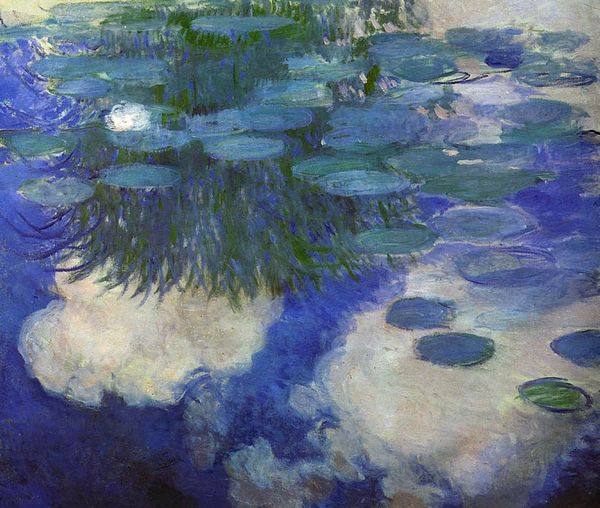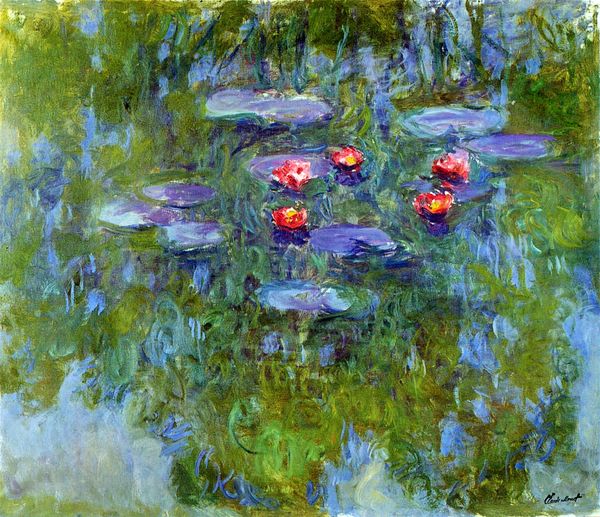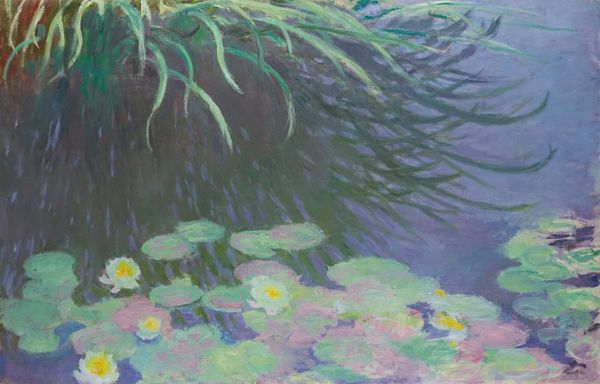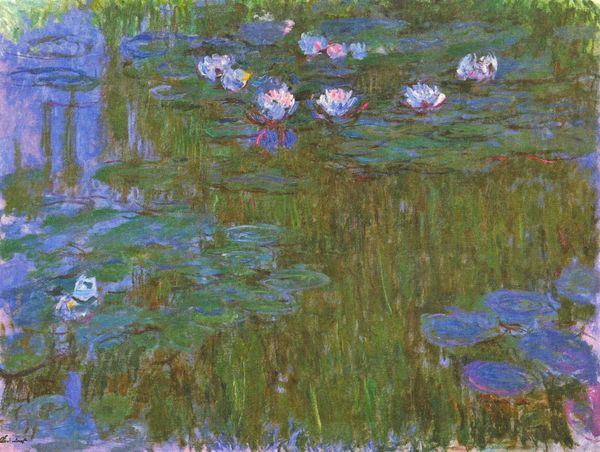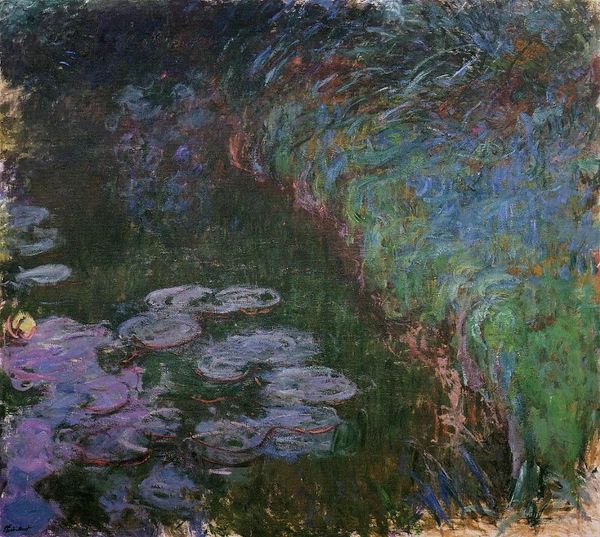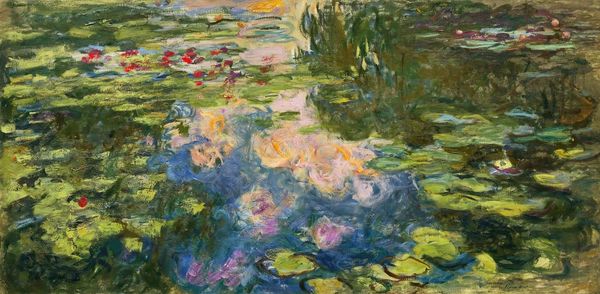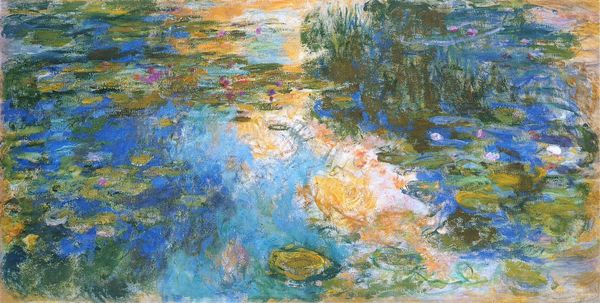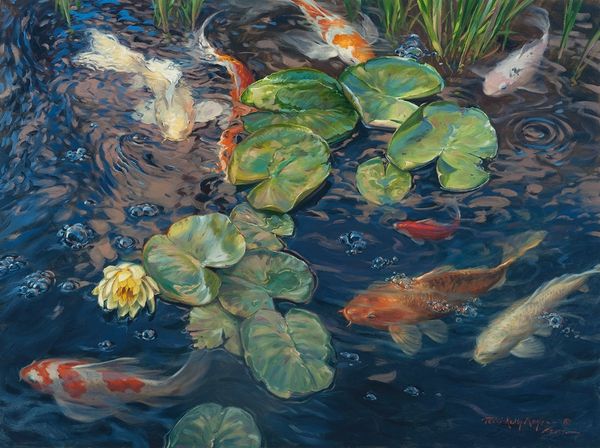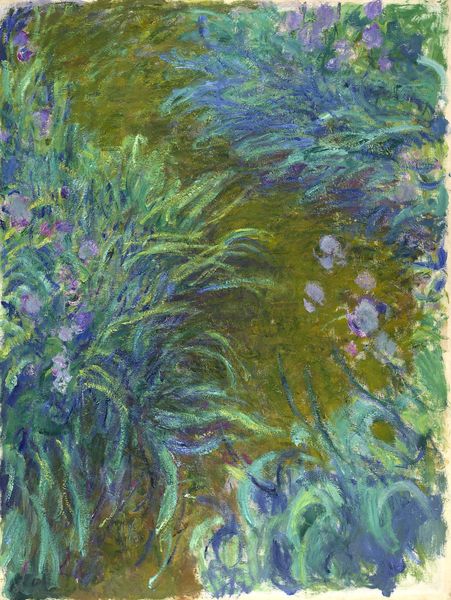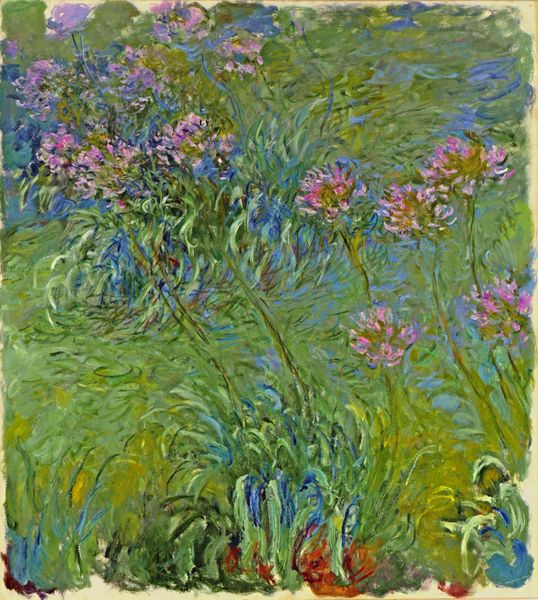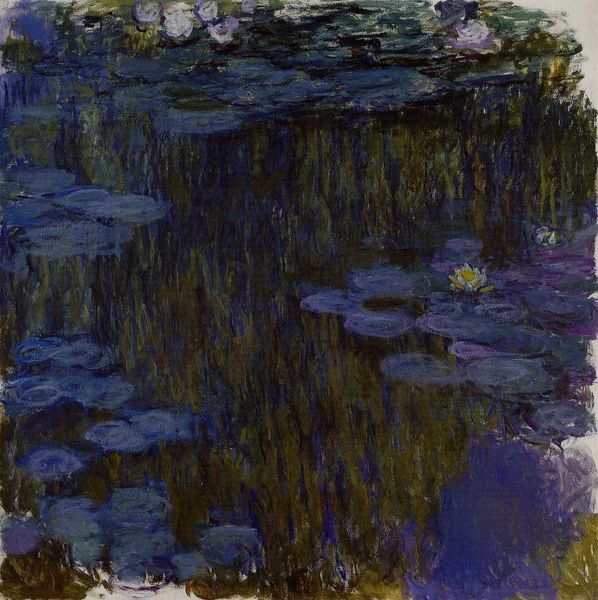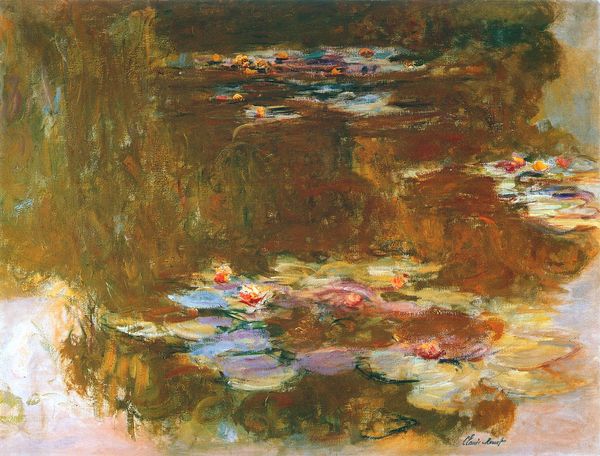
Copyright: Public domain
Claude Monet made this oil painting of irises and water lilies in France, but it's difficult to put an exact date on it. Monet was at the forefront of Impressionism, a late 19th-century movement which challenged the established academic style of painting. Impressionist artists like Monet often worked en plein air to capture the fleeting effects of light and atmosphere. Monet's focus on nature, particularly his famous garden at Giverny, reflects the values of the rising middle class, who embraced leisure and the natural world. But the work also critiques the art institutions of its day, challenging the traditional emphasis on historical and mythological subjects. Monet was part of a group of artists who established new exhibition societies outside the control of the official Salon, creating alternative venues for displaying their work. To better understand Monet's art, we can consult letters, exhibition reviews, and other archival documents. These resources provide valuable insights into the artistic and social contexts in which his paintings were created and exhibited.
Comments
No comments
Be the first to comment and join the conversation on the ultimate creative platform.
